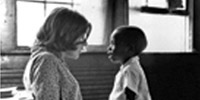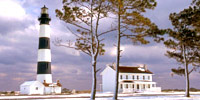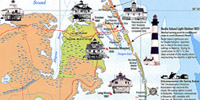Tying Tobacco


Tobacco was to North Carolina what oil was to Texas during the mid-nineteenth century. The crop provided income for many people. Making a livelihood on small farms where tobacco was the money crop, finicky weather could determine the value of tobacco at auction. Farmers and tenant farmers, even farm workers constantly asked themselves if there would be enough money to pay the bills or buy new clothes. At this time, local general stores ran a “tab” for families and expected to be paid once the crop was sold. Since each family’s well-being depended on the success of the crop, everyone worked.
Flue-cured tobacco was handpicked and then strung on sticks that were hung in barns to be “cured” with heat until the green leaves turned golden. Too little or too much heat diminished the value at auction and guaranteed a year of economic hardship. Stories circulated in the 1960s about tobacco barns that had caught fire and burned the season’s harvest, hail that destroyed the tobacco just before picking, and the multitude of bugs and worms that could devour the crop and a year’s work. It took many prayers to get a crop safely to market. Lumbee Indians were known to have especially good talents at growing and curing tobacco. Then, it was determined that tobacco caused cancer. It was truly what I always heard it called, “the crop from hell.”


Enter your text here
Enter your text here



BOOKS
BLACK & WHITE
PHOTOGRAPHS
POSTERS & MAPS
COLOR
PHOTOGRAPHS
THE STORIES BEHIND
THE PHOTOGRAPHS
COLOR
PHOTOGRAPHS

BLACK & WHITE
PHOTOGRAPHS

THE STORIES BEHIND
THE PHOTOGRAPHS

BOOKS

Enter your text here
Enter your text here
POSTERS & MAPS

Clicking this button takes you to the PHOTOS STOREFRONT where you will need to navigate to this photograph to purchase it.